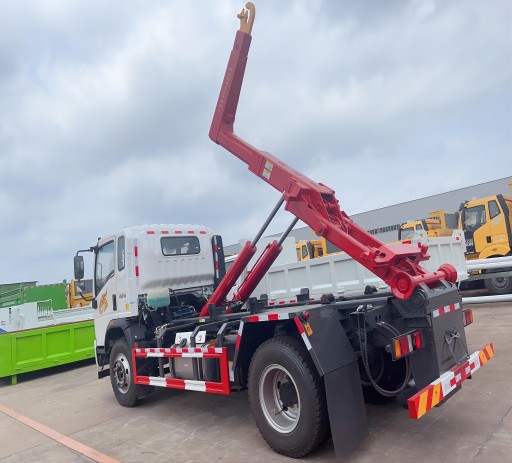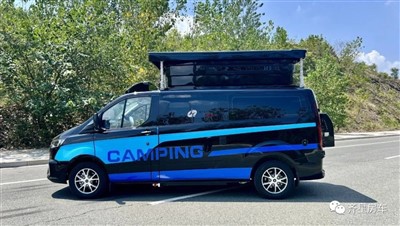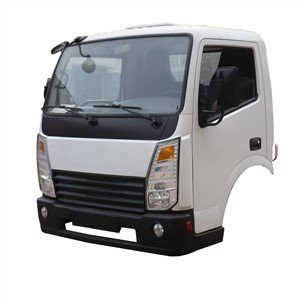Everything You Need to Know About Cab Over Chassis Vehicles
Introduction
When it comes to commercial vehicles, the cab over chassis design is a popular choice among businesses due to its unique advantages in usability and functionality. The term refers to a type of vehicle where the cab is situated directly above the chassis and the engine. This configuration provides a different kind of driving experience, greater visibility, and flexibility in cargo space. In this article, we will explore the intricacies of cab over chassis vehicles, their benefits, applications, and much more.
What is a Cab Over Chassis?
A cab over chassis (COC) vehicle is designed with the cabin positioned over the engine and chassis. This layout allows for a shorter overall length while maximizing the vehicle’s cargo area. COCs are commonly used for trucks, buses, and specialty vehicles, and they differ significantly from conventional trucks where the cab is set back from the front axle.
The Anatomy of a Cab Over Chassis
Here’s a breakdown of the main components of a cab over chassis vehicle:

- Cab: The driver’s compartment that provides visibility and comfort.
- Chassis: The framework that supports the vehicle’s body and components.
- Engine: Positioned directly beneath the cab, contributing to the compact design.
Advantages of Cab Over Chassis Vehicles
There are several reasons why cab over chassis vehicles are favored in many industries:
1. Enhanced Maneuverability
The compact design of cab over chassis vehicles allows them to navigate tight spaces and urban environments effectively. They have a shorter turning radius, which is especially beneficial for delivery trucks and service vehicles.
2. Increased Cargo Capacity
The cab over design maximizes the length of the cargo area. This is particularly useful for businesses that require additional space for transporting goods. A longer cargo area can often translate to a higher payload capacity.
3. Better Visibility
Drivers of cab over chassis vehicles often enjoy improved visibility. Since the driver sits above the engine, they can easily see the road, which aids in both safety and convenience, especially when making turns or navigating congested areas.
4. More Efficient Use of Space
The design allows for an optimal use of space within the vehicle body. The engine being housed below the cab leaves more room for cargo and other modifications, making it a favorite for custom builds.
Applications of Cab Over Chassis Vehicles
Cab over chassis vehicles serve a variety of purposes across different industries:
1. Delivery Trucks

Many delivery services utilize cab over chassis vehicles to maximize load space while maintaining a compact footprint. This is essential for urban deliveries with tight streets and limited parking.
2. Emergency Services
Ambulances and fire trucks often utilize this design for its maneuverability and ability to quickly adapt to different operational needs.
3. Construction and Utility Vehicles
Construction crews and utility companies frequently modify cab over chassis vehicles for specific needs, including material hauling and equipment transport. Their adaptability makes them ideal for such applications.
4. Recreational Vehicles
Many RVs use the cab over chassis design, providing roomy living quarters and storage. These vehicles often come equipped with amenities for comfortable long-distance travel.
Choosing the Right Cab Over Chassis Vehicle
When selecting a cab over chassis vehicle, consider the following factors:
1. Purpose and Load Requirements
Define the primary function of your vehicle. Will you be transporting heavy loads or simply making deliveries? Choose a model that fits those needs.
2. Engine Performance
Evaluate the engine specifications, including horsepower, torque, and fuel efficiency. More powerful engines may be necessary for heavier loads or rough terrain.
3. Customization Options
Look for manufacturers that offer various customization options. Depending on your business requirements, you may need specific attachments or modifications.
4. Brand Reputation and Support
Research different manufacturers and their reputations. Reliable after-sales support and availability of parts are crucial for long-term ownership.

Maintenance Tips for Cab Over Chassis Vehicles
Proper maintenance is key to ensuring longevity and performance. Here are some essential tips:
1. Regular Inspections
Perform regular inspections of the engine and chassis. Look for signs of wear and tear, leaks, or any unusual noises.
2. Fluid Levels
Check engine oil, coolant, transmission, and brake fluids regularly. Keeping fluid levels optimal is crucial for engine performance and safety.
3. Tire Maintenance
Maintain proper tire pressure and tread depth. This not only ensures safety but also enhances fuel efficiency.
4. Scheduled Service
Adhere to the manufacturer’s recommended service schedule. Regular servicing can prevent major issues and prolong vehicle life.
Common Misconceptions about Cab Over Chassis Vehicles
As is the case with many technological designs, several misconceptions exist regarding cab over chassis vehicles:
1. They Are Less Comfortable
Many people assume that COCs offer a less comfortable ride due to their compact design. However, innovations in cab design have led to improved driver comfort.
2. They Are Underpowered
While older models may have had power issues, modern cab over chassis vehicles are equipped with robust engines that provide ample power for various needs.
3. They Have Limited Cargo Options
On the contrary, cab over chassis vehicles often allow for customizable cargo options, which can be tailored to meet specific business demands.
Real-Life Examples of Cab Over Chassis Vehicles
To better understand the practicality of cab over chassis vehicles, let’s look at some real-life examples:
1. Mercedes-Benz Sprinter
This versatile vehicle is popular among delivery services and can also be modified for camper conversions. Its cab over design allows greater cargo space while maintaining agility for city driving.
2. Ford Transit Chassis Cab
The Ford Transit is known for its adaptability. It can be configured for various roles, including delivery, construction, and even as a mobile workshop, showcasing the flexibility of COC designs.
3. Isuzu NPR
This medium-duty truck has found a niche in urban deliveries. Its cab over design enables excellent maneuverability in tight spaces without sacrificing cargo space.
Market Trends in Cab Over Chassis Vehicles
The cab over chassis market is evolving due to various factors including sustainability, technology, and consumer demands:
1. Sustainability Efforts
Manufacturers are increasingly focused on producing greener models, including electric cab over chassis vehicles that offer zero emissions and reduced operating costs.
2. Technological Innovations
Enhanced safety features such as lane departure warnings, adaptive cruise control, and advanced navigation systems are becoming standard in COC vehicles.
3. Customization Trends
More businesses are seeking tailored solutions for their specific needs, leading manufacturers to offer customizable options to suit various industry requirements.
Frequently Asked Questions (FAQ)
1. What is the primary benefit of a cab over chassis design?
The primary benefit is the maximization of cargo space while maintaining a compact vehicle that is easier to maneuver in urban settings.
2. Are cab over chassis vehicles more expensive than traditional trucks?
The cost can vary based on model, features, and customization. Generally, a cab over chassis may be comparable or slightly higher in price but often provides better value over time due to efficiency and performance.
3. Can cab over chassis vehicles be modified for specific applications?
Yes, many cab over chassis vehicles are designed to be highly customizable, allowing for modifications tailored to various industrial or recreational uses.
4. How does the visibility in a cab over chassis compare to a conventional truck?
Drivers of cab over chassis vehicles typically enjoy better visibility due to the elevated seating position, which helps in navigating and safely driving in urban environments.
5. What maintenance do cab over chassis vehicles require?
Regular maintenance includes fluid checks, brake inspections, tire rotations, and adhering to the manufacturer’s service schedule to ensure optimal performance.
6. Are cab over chassis vehicles suitable for heavy hauling?
Yes, many cab over chassis models are designed for heavy-duty applications and can efficiently handle substantial loads based on their specifications.
